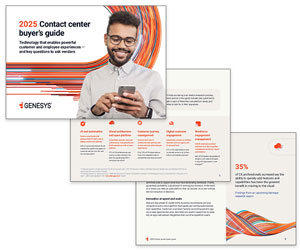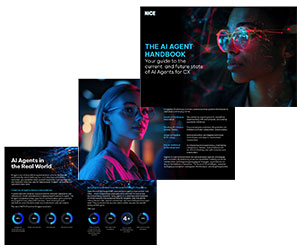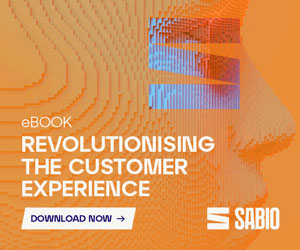Customer needs change. It’s just a fact! The challenge is in making sure your contact centre keeps pace… And the best way to do this is to take a proactive approach to identifying customer needs!
To uncover exactly how to approach this monumental task, our Editor, Megan Jones, interviewed Katie Stabler of CULTIVATE Customer Experience by Design, and Brad Cleveland, a well-respected consultant, keynote speaker, and course instructor.
Here’s what they shared…
The 3 Layers of Identifying Customer Needs
The secret to identifying customer needs is to take a multilayered approach to capture direct insight from your customers, user behavioural data, and deep-dive insight, and, as Katie Stabler says, “I would highly advocate that contact centre leaders do all three. It’s certainly not a case of one or the other”.
Want to find out more? These three layers in practice are as follows:
1. Direct Insight From Your Customers
Despite ongoing debate about their effectiveness and engagement rates, customer surveys are still very important, as Katie explains, “It’s the opportunity for customers to give direct insight and feel like they’re being asked for their opinion.”
However, they should be used with caution, as Brad Cleveland adds, “We’re over-surveying customers!
“Worse still, you just can’t get everything you need from surveys, as many have low uptake, so if you’re making big decisions on the fact that a low percentage of your customer base filled in the survey, then that’s quite dangerous!
“We still need them, of course, but they can’t be a primary source any more. You really need breadth!”
Beyond surveys, capturing direct insight from your customers also extends to utilizing technology, including the latest AI-driven insight generation such as conversational analytics and sentiment analysis – removing the need to ask customers directly for their feedback.
Instead, learn from everything in your calls, emails, and live chat, right through to the comments left on your websites and social media.
As Katie Stabler adds, “There’s so much insight available at your fingertips, but many organizations still aren’t utilizing the latest technology to capture it.”
It’s equally important to talk directly to your customers when you get a chance – via interviews and focus groups.
In some cases, you might even conduct ethnographic research, where you’re observing and watching customers to understand how they naturally interact with your products and services.
If you are looking for more suggestions on how to collect customer feedback, read our article: Stop Spamming! 10 Better Ways to Collect Customer Feedback
2. User Behavioural Data
Drilling down into user behavioural data includes activities such as exploring how customers are interacting with your website, as Katie Stabler explains:
“Website analytics is a great way to identify customer needs, because you can see the most common avenues that they are taking and the things that they’re looking for most. This will then give you the requirements of what they want on the website!”
The same goes for customer service data, which will help you answer questions such as:
- Why are customers contacting you in the first place?
- What’s their preference?
- What do they like dislike about your customer service options?
- Are you offering the right channels to meet their needs?
With the help of AI, you can even get a better understanding of how customers are using your self-service and knowledge articles too.
3. Deep-Dive Insight
Deep-dive insight is all about bringing an outside-in view to your research, through customer journey mapping (for example).

This really is about digging as deep as you possibly can, as Katie Stabler explains: “You need to look at every interaction at a transactional level and really understand the nuances of it. Is it working?
“What do your customers expect and need at every single step? Are you helping them to achieve that in the easiest possible way?”
Then be sure to add the voice of the employee too! Nobody knows your customer experience as well as your frontline. They see, hear, and feel what’s happening every day. They are a massively underutilized source of insight, so make sure you involve them!
Looking for ways to get your staff to provide more feedback on customers? Read our article: Want Your Frontline Staff to Share More Customer Feedback? Try This!

It can also help to experience your own services first-hand, as Brad Cleveland explains:
“When you want things to be as easy as possible and understand the options your customers are presented with, it can make a big difference to experience your own organization’s products or services as a customer.
“Put yourself in their shoes as much as you can and then take those insights back into your organization!”
Mistakes to Avoid
Don’t Forget to Hold Someone Accountable for Bringing It All Together
It’s very likely that these three layers of insight are being captured by different departments in varying degrees across your organization – in a very siloed approach. That’s because bringing all this insight together is hard!
As Katie Stabler explains, “Generally speaking, you need to hold someone accountable for bringing all of this customer insight together and driving its use through the wider organization – such as somebody with an official CX title. Otherwise, it doesn’t matter what you’re doing, it’s not going to maintain momentum!”
Blindly Trusting Data and Ignoring Your Instinct
Don’t forget to trust your instinct too, as Brad Cleveland adds, “It always helps if you can use your intuition and get away from the data for a little bit. The data is important, but you need to trust your instincts as a leader too.”
Beware Relying on Metrics Alone
A lot of organizations use metrics to understand customer needs. However, you need to err on the side of caution on relying on them too heavily, as they are only an indicator of customer needs – not the full picture of what’s driving them.
As Katie Stabler continues, “My biggest advice to give to any organization trying to understand customer needs is just to know that you need to take as robust as an approach as possible and that any one of these methods alone isn’t going to provide you with much understanding.”
For advice on how to spot if your team leaders are chasing metrics, and how to hit the reset button, read our article: Are Your Team Leaders Too Busy Chasing Metrics?
Relying on Historical Understanding Alone
A final pitfall is relying on historical understanding and not moving forward with potential changes, as Katie Stabler explains, “We all change! We as people change, our businesses change, the environment around us changes, the services and products that we buy change.
“So even if we believe as an organization (backed by data) that we did have a strong understanding of customer needs, that isn’t to say that they don’t naturally evolve and what was right yesterday is still right today.”
Why Is It So Important to Identify Customer Needs?
Quite simply, if you can truly understand what your customer needs are, then you stop making assumptions which can lead to very costly mistakes, as Katie Stabler concludes, “If you only take an internal view of customer needs, you’re inevitably going to get something wrong!
“Then when you roll out something that doesn’t actually meet customer needs, then there’s a massive failure there in wasted time, effort, and resource – all at the ultimate cost of the customer experience!”
If you are looking for more information and advice on handling customer needs and making your service stand out, read these articles next:
- The Customer Hierarchy of Needs
- 21 Tips to Make Your Customers Feel Truly Valued
- What It Really Takes to Deliver Luxury Customer Service – With Examples
Author: Megan Jones
Reviewed by: Jo Robinson
Published On: 4th Sep 2024
Read more about - Customer Service Strategy, Brad Cleveland, Customer Service, CX, Katie Stabler, Top Story








































